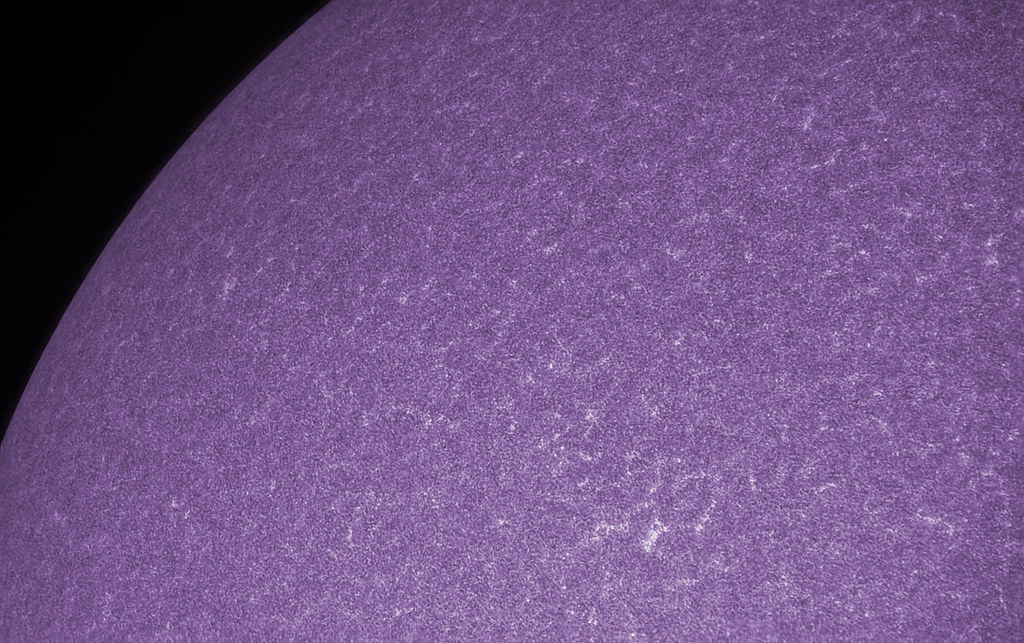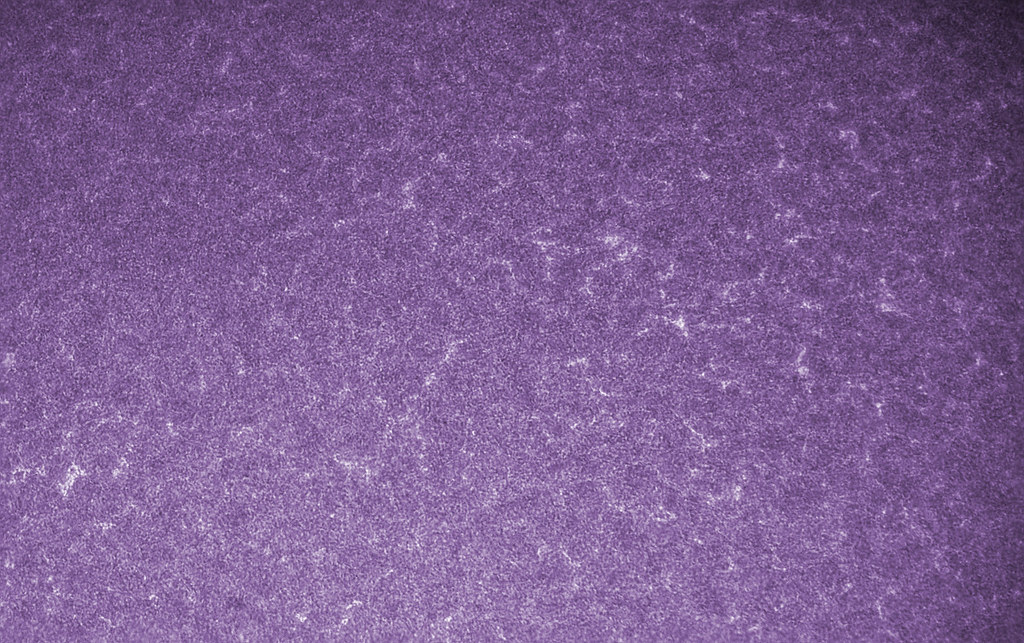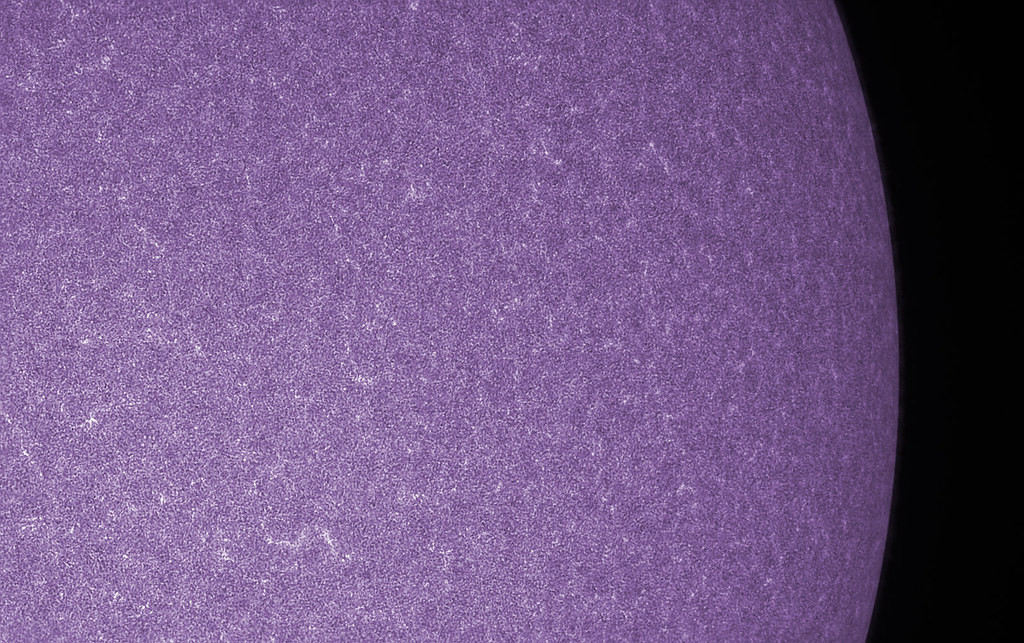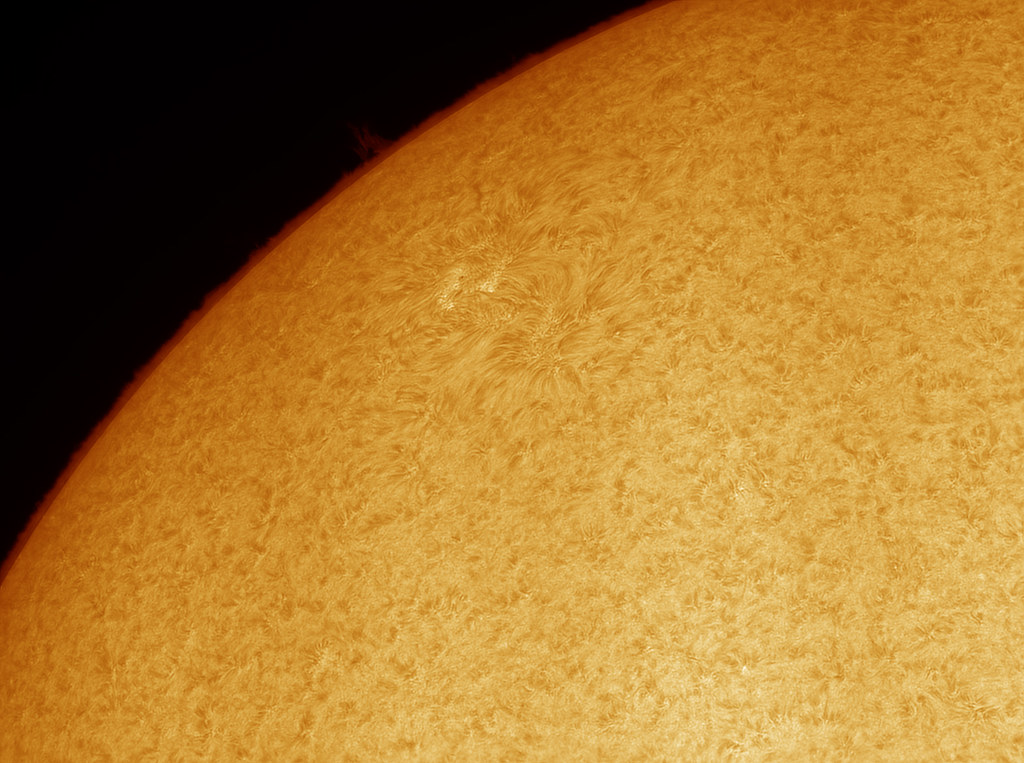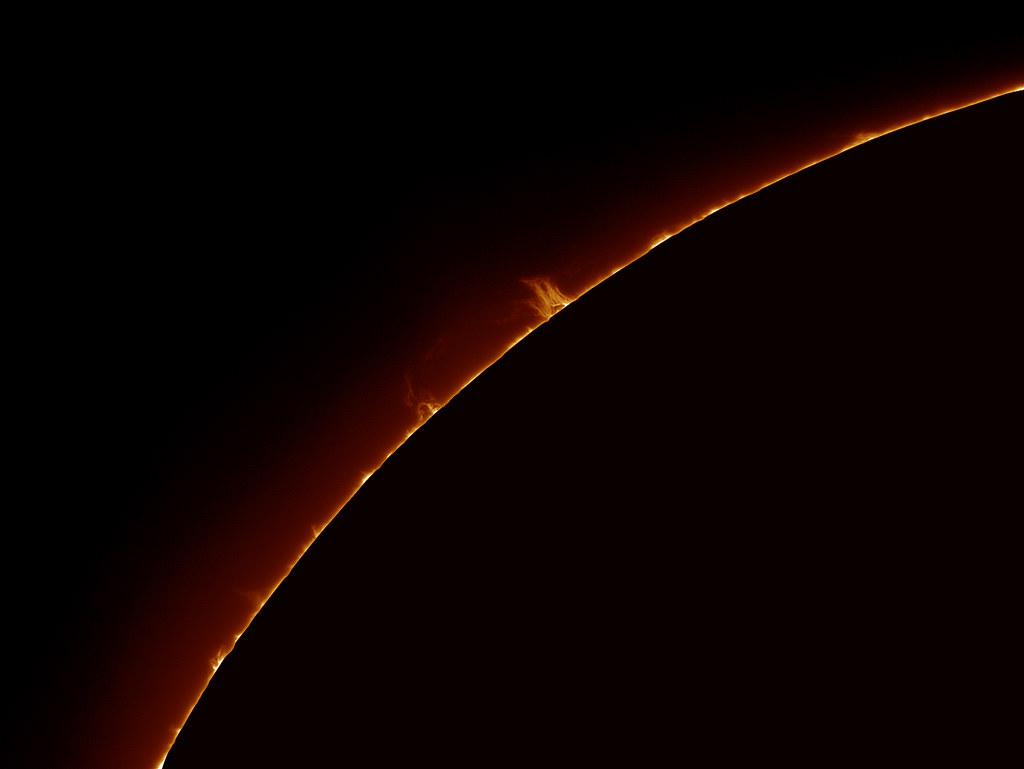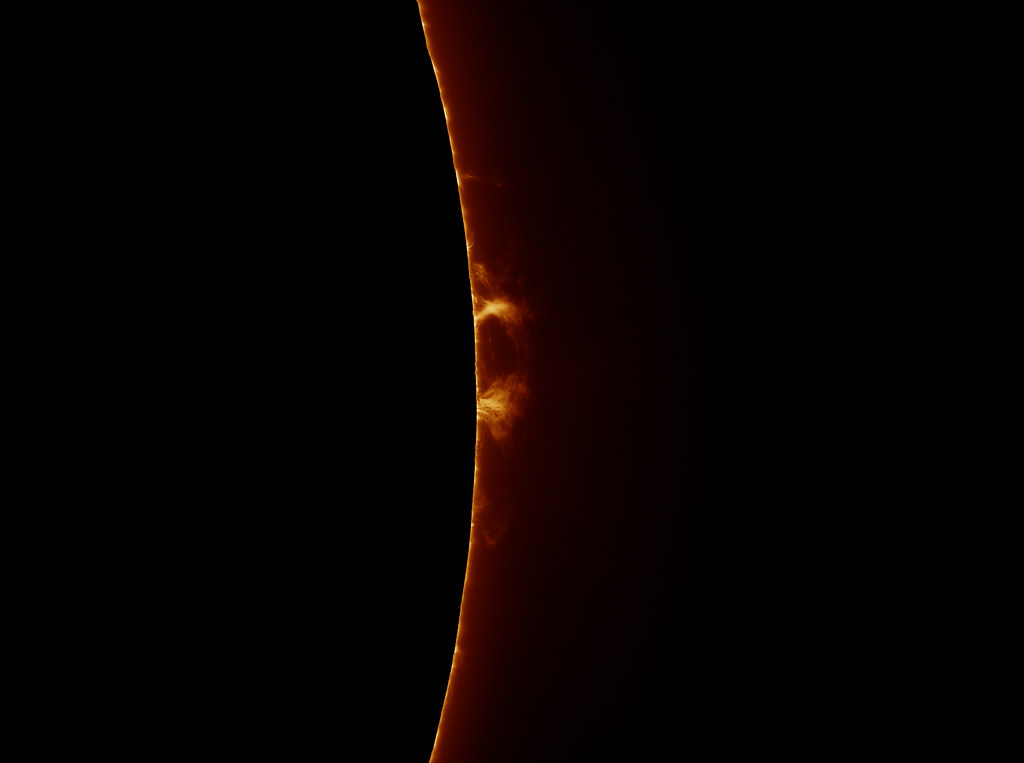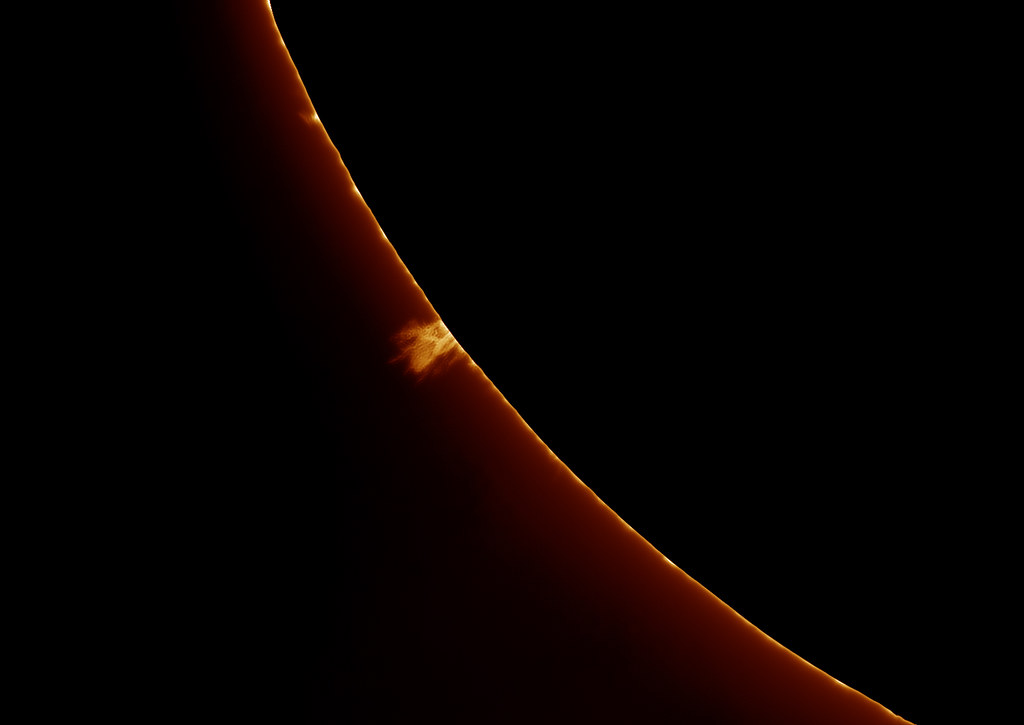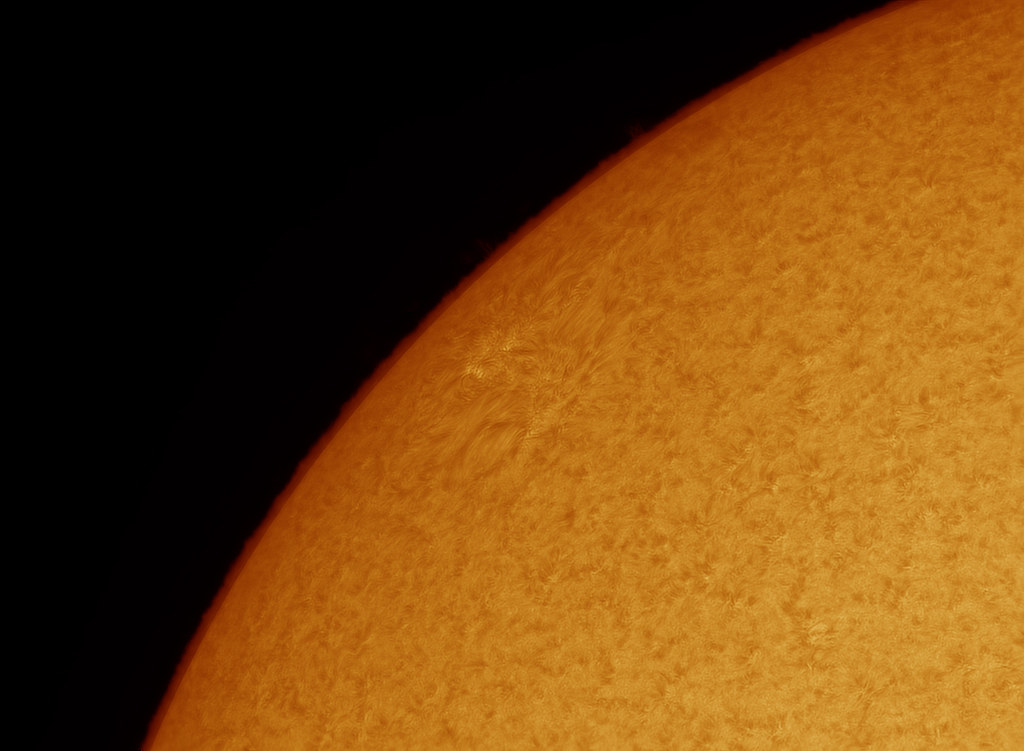 This filament was the only feature of note on the sun! However its presence and position associates itself with the sub surface cycle 25 jet stream, hopefully only a matter of time before activity picks up a bit! Taken with the Coronado SM90 double stacked with the Daystar Quark.
This filament was the only feature of note on the sun! However its presence and position associates itself with the sub surface cycle 25 jet stream, hopefully only a matter of time before activity picks up a bit! Taken with the Coronado SM90 double stacked with the Daystar Quark.
 The sun is well, pretty much blank again! This image whilst not perfect, as the focus shifts in the right hand side of the image, is useful as I think i've worked out that the focus shift is caused by the thumbscrews on the etalon cell being too tight and then pinching the tube and hence optics. I've arranged a slightly different configuration and so are keen to try this out and see if it solves it.
The sun is well, pretty much blank again! This image whilst not perfect, as the focus shifts in the right hand side of the image, is useful as I think i've worked out that the focus shift is caused by the thumbscrews on the etalon cell being too tight and then pinching the tube and hence optics. I've arranged a slightly different configuration and so are keen to try this out and see if it solves it.
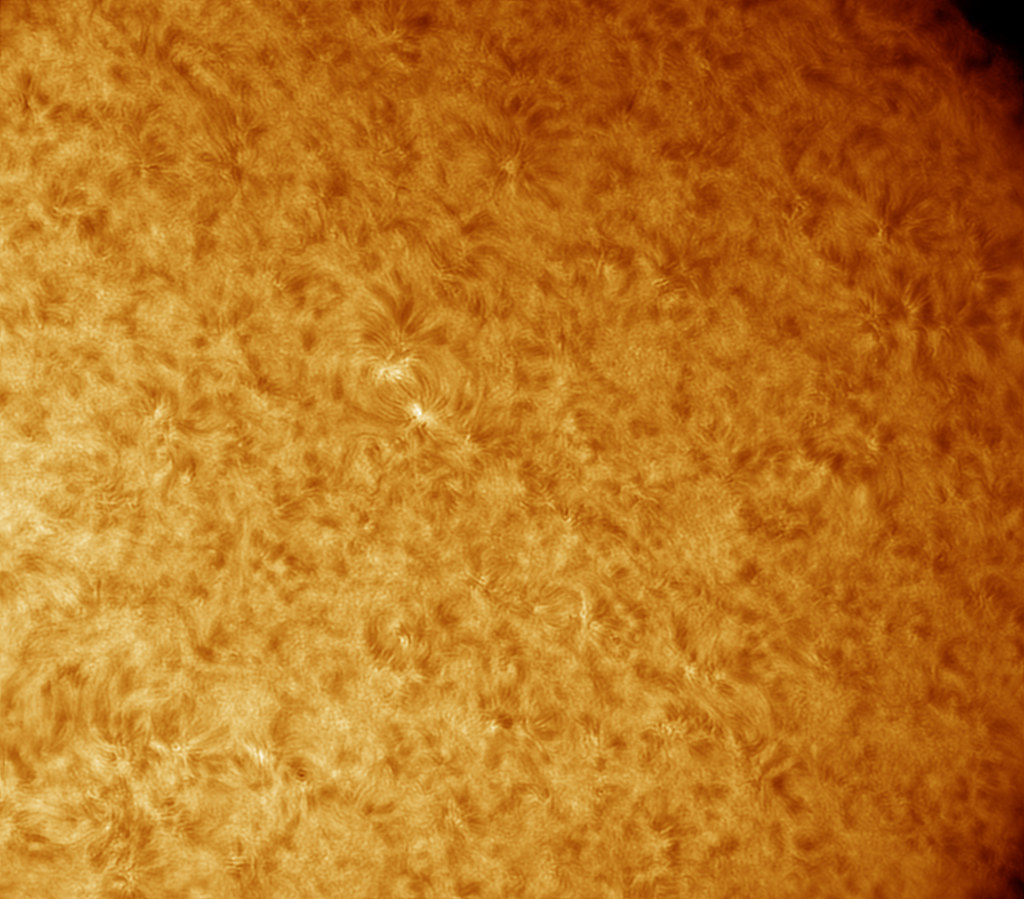 To try and get more use out of the 8" Airylab HaT I decided to make some cardboard masks to stop down the aperture to make it more usable in less than ideal seeing conditions. I made 2, a 175mm and the one I used here which is 155mm. While the conditions we're ideal on one of the hottest days of the year it did produce a usable image and holds potential for greater use in the future.
To try and get more use out of the 8" Airylab HaT I decided to make some cardboard masks to stop down the aperture to make it more usable in less than ideal seeing conditions. I made 2, a 175mm and the one I used here which is 155mm. While the conditions we're ideal on one of the hottest days of the year it did produce a usable image and holds potential for greater use in the future.
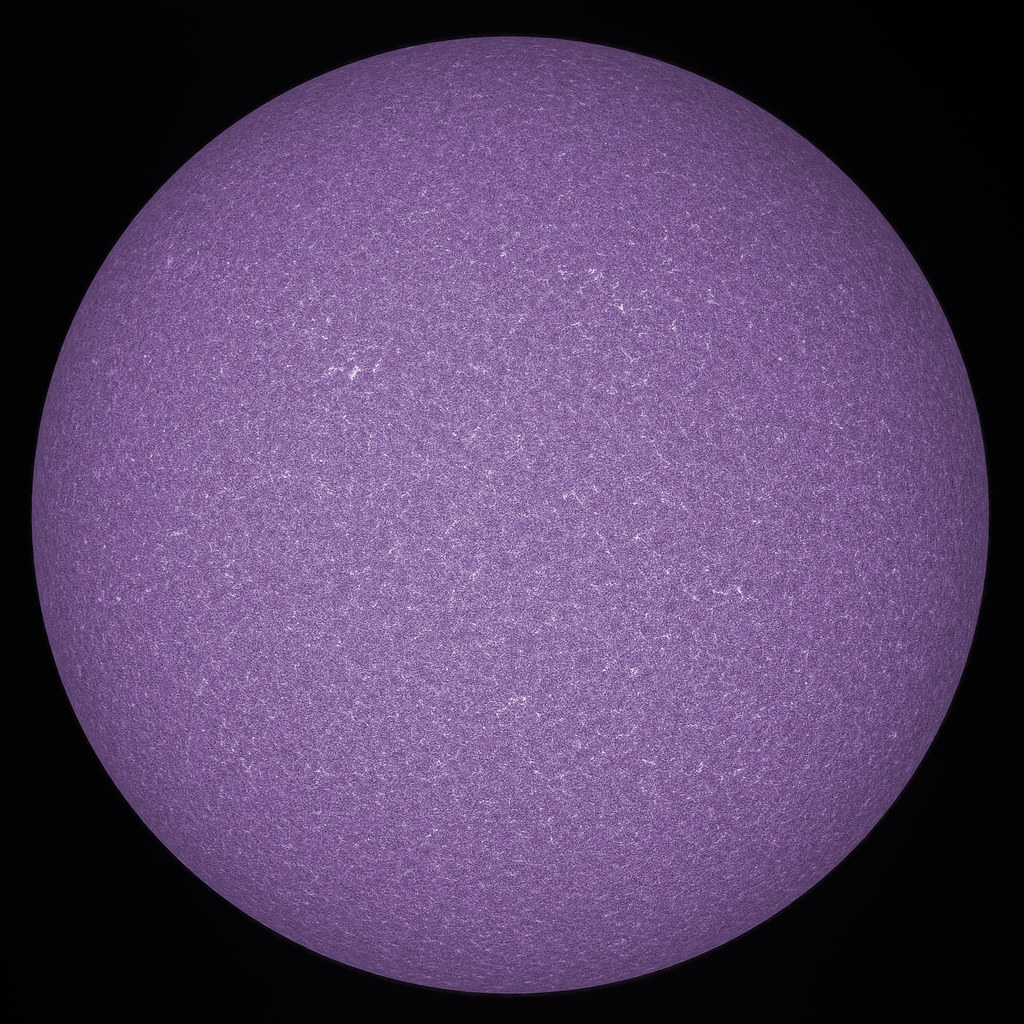 Exposure time is brought down to about 3ms with the full disk when using the 100mm Tal at 60mm aperture to give f16 at both the filter and the chip. Plenty of fine detail is visible.
Exposure time is brought down to about 3ms with the full disk when using the 100mm Tal at 60mm aperture to give f16 at both the filter and the chip. Plenty of fine detail is visible.
 My first Ha full disk for a while and the suns disk has taken a turn back into solar minimum with little in the way to see. Taken with the double stacked 50mm travelling scope.
My first Ha full disk for a while and the suns disk has taken a turn back into solar minimum with little in the way to see. Taken with the double stacked 50mm travelling scope.
 Bright patches on the STEREO imagery in the preceding days caused hope among the solar community of more active regions, alas this was not the case and all that rotated was some patches of plage, not really much brighter than the surrounding chromospheric network. Still, this proved a target for the 100mm Tal at f28 with the newly configured CaK filter and its reduced exposure time.
Bright patches on the STEREO imagery in the preceding days caused hope among the solar community of more active regions, alas this was not the case and all that rotated was some patches of plage, not really much brighter than the surrounding chromospheric network. Still, this proved a target for the 100mm Tal at f28 with the newly configured CaK filter and its reduced exposure time.
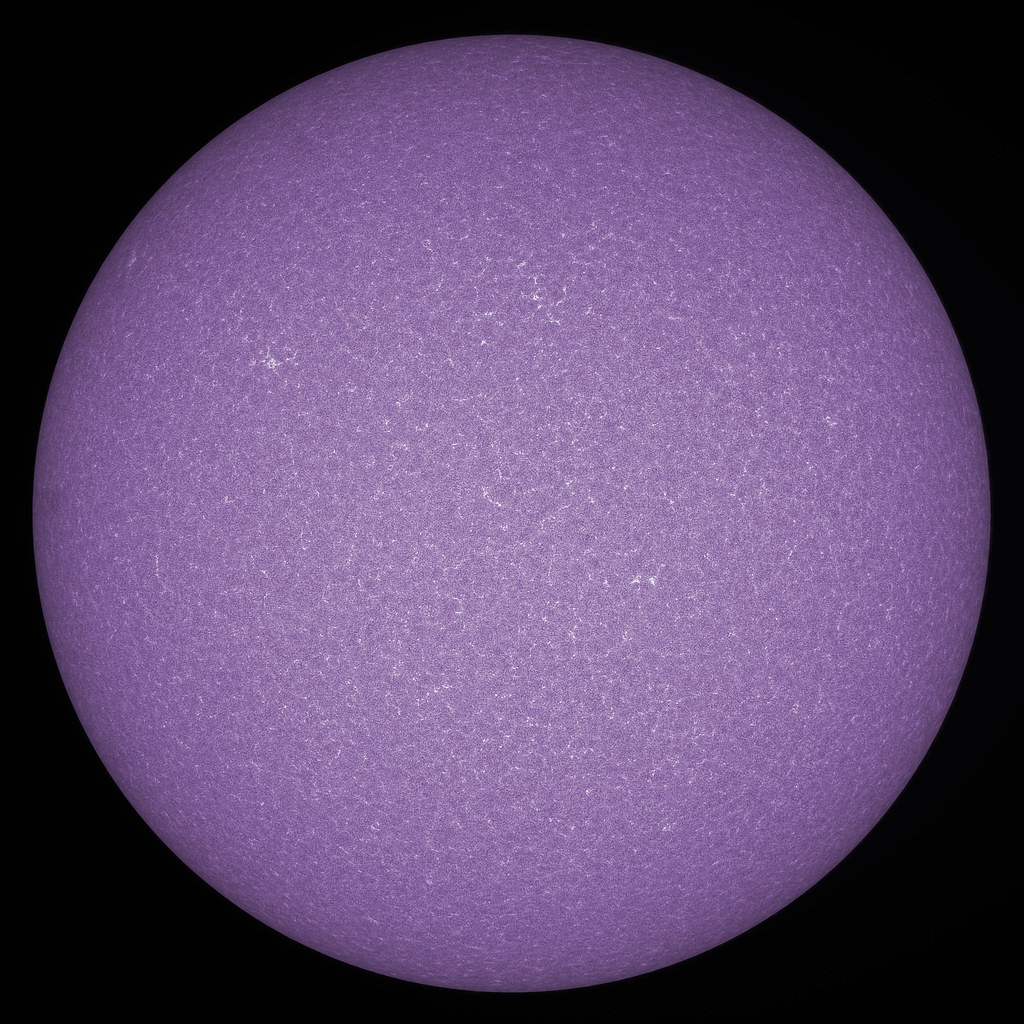 First test of the new CaK filter and first impressions are promising, exposure time is pretty much halved which is always a bonus, not sure if I have a faint reflection to deal with or it was haze / high cloud earlier. There appears to be no blurring of detail, although the image was taken in between shower clouds so seeing was far from ideal. Taken with the 60mm scope at f16 at both the filter and also the chip.
First test of the new CaK filter and first impressions are promising, exposure time is pretty much halved which is always a bonus, not sure if I have a faint reflection to deal with or it was haze / high cloud earlier. There appears to be no blurring of detail, although the image was taken in between shower clouds so seeing was far from ideal. Taken with the 60mm scope at f16 at both the filter and also the chip.
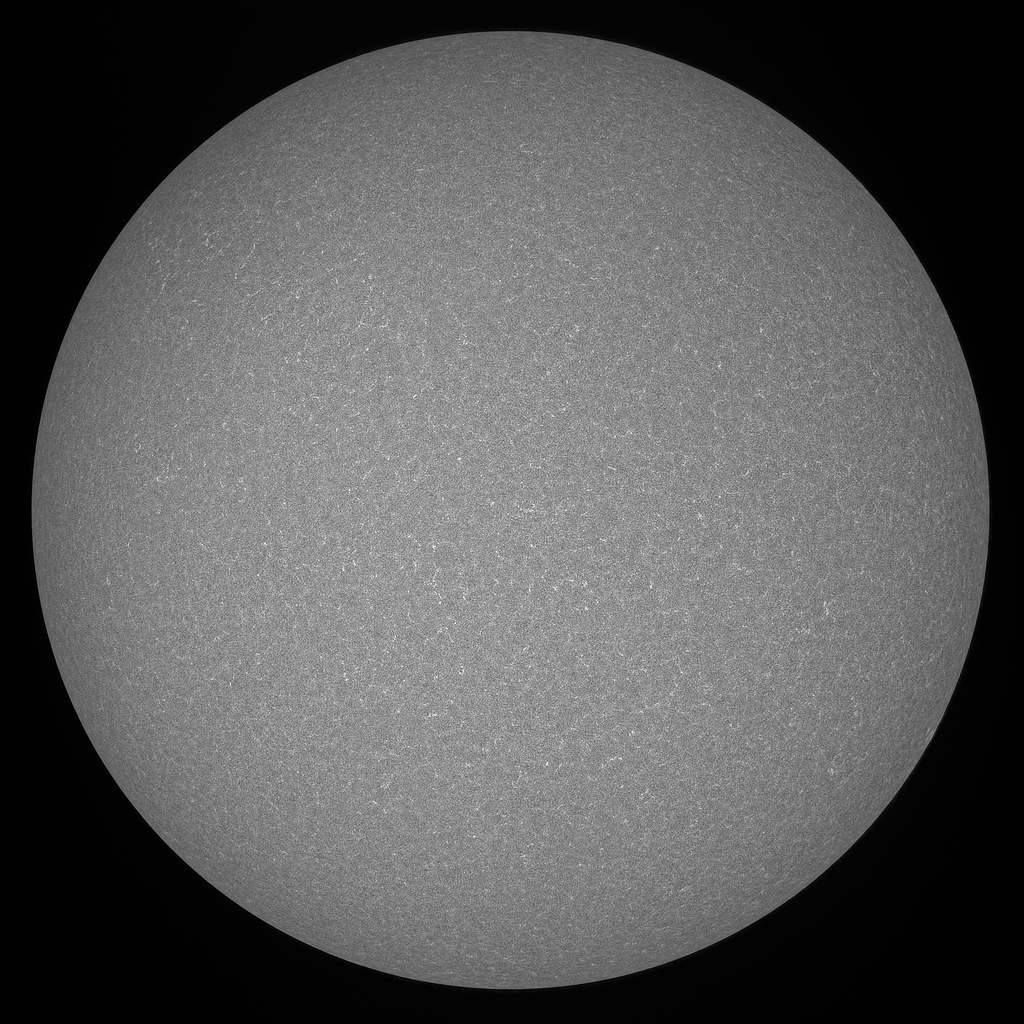 Testing the new filter configuration here, slightly shorter exposure times with the 394/10 instead of the K Line. Next step is to try without the KG3 to give more light - success will depend on whether the increase in IR will cause a reduction in contrast.
Testing the new filter configuration here, slightly shorter exposure times with the 394/10 instead of the K Line. Next step is to try without the KG3 to give more light - success will depend on whether the increase in IR will cause a reduction in contrast.
 Things are busy at the moment and this is one of the first images I have managed to get in over a week, i'm currently going through a rebuild of my CaK filter in an attempt to get a bit more light through. This shot was taken with the 100mm Tal refractor stopped down to 60mm to give f16 at both the filter and also the camera chip. I was pleased to catch the active region before it finally heads over the departing limb.
Things are busy at the moment and this is one of the first images I have managed to get in over a week, i'm currently going through a rebuild of my CaK filter in an attempt to get a bit more light through. This shot was taken with the 100mm Tal refractor stopped down to 60mm to give f16 at both the filter and also the camera chip. I was pleased to catch the active region before it finally heads over the departing limb.
I finally caught my first ISS solar transit! I consider myself very lucky as the day was dominated by sunshine and heavy showers, and, 5 minutes before the transit it was raining, not long after the transit it was raining. I used the 100mm Tal refractor stopped down to 60mm to give f16 at the filter and the camera chip. The seeing was bubbling away as can be seen in the animation that was taken in calcium light with pseudo colour added later. I was pleased to see in the individual frames the solar panels and also the crew modules clearly visible. At the time the space station was 725km away and travelling at a speed of 7.25km/s, with the total transit time lasting a brief 1.4 seconds.





